Nathaniel Hamilton
Investigating the Impact of Observation Space Design Choices On Training Reinforcement Learning Solutions for Spacecraft Problems
Jan 10, 2025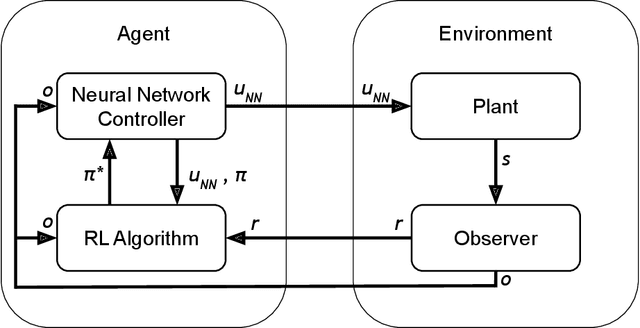
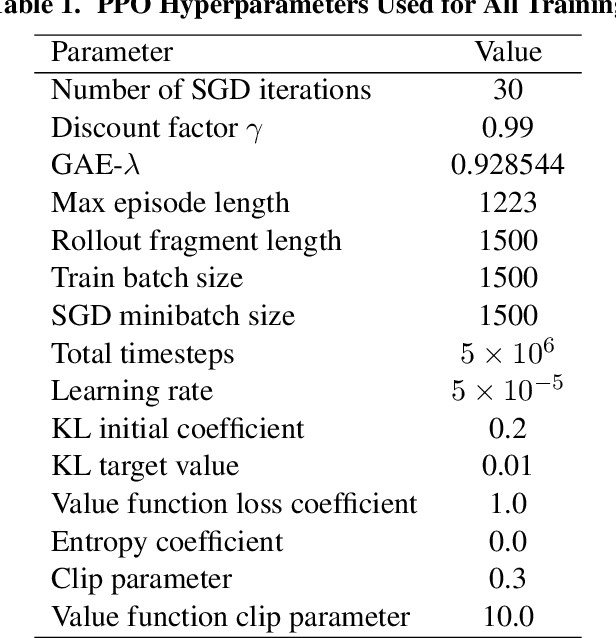
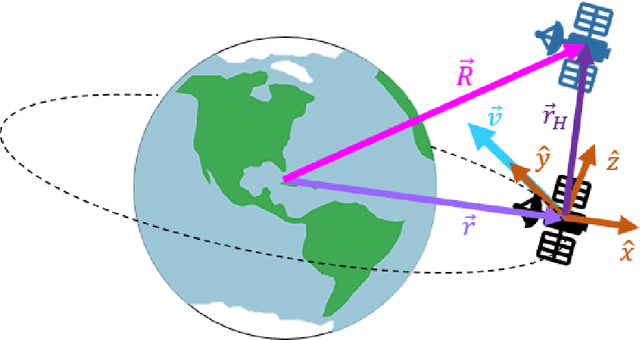

Abstract:Recent research using Reinforcement Learning (RL) to learn autonomous control for spacecraft operations has shown great success. However, a recent study showed their performance could be improved by changing the action space, i.e. control outputs, used in the learning environment. This has opened the door for finding more improvements through further changes to the environment. The work in this paper focuses on how changes to the environment's observation space can impact the training and performance of RL agents learning the spacecraft inspection task. The studies are split into two groups. The first looks at the impact of sensors that were designed to help agents learn the task. The second looks at the impact of reference frames, reorienting the agent to see the world from a different perspective. The results show the sensors are not necessary, but most of them help agents learn more optimal behavior, and that the reference frame does not have a large impact, but is best kept consistent.
Investigating the Impact of Choice on Deep Reinforcement Learning for Space Controls
May 20, 2024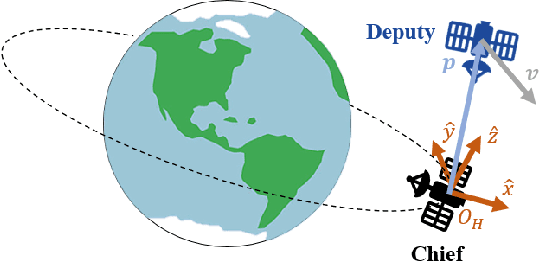
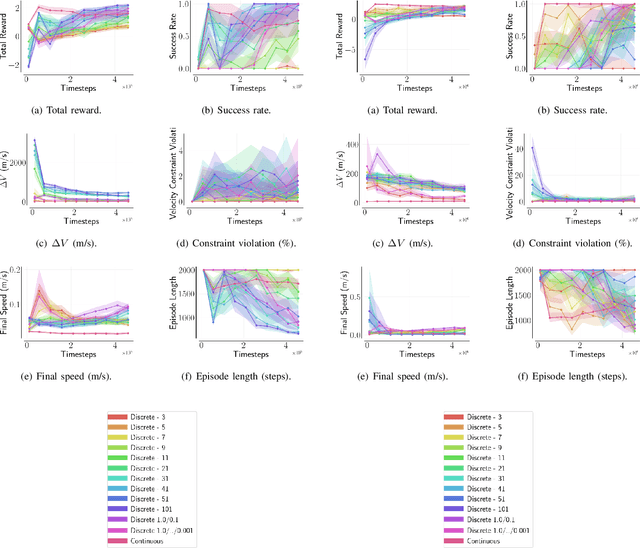
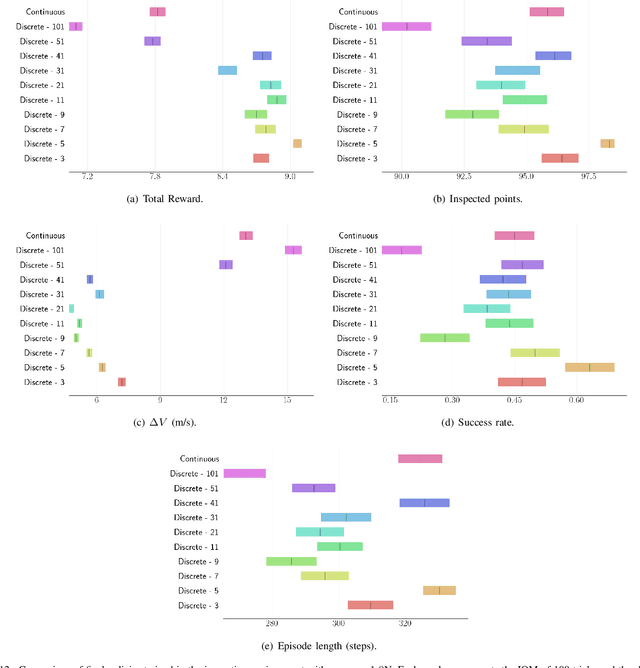
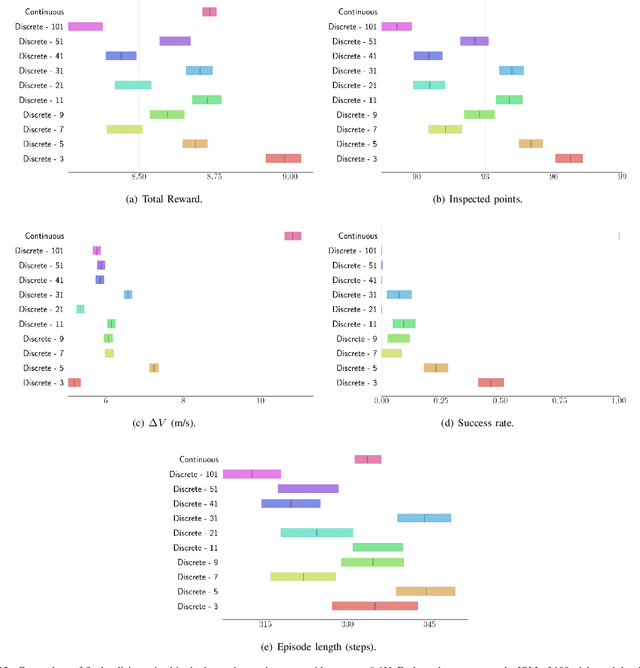
Abstract:For many space applications, traditional control methods are often used during operation. However, as the number of space assets continues to grow, autonomous operation can enable rapid development of control methods for different space related tasks. One method of developing autonomous control is Reinforcement Learning (RL), which has become increasingly popular after demonstrating promising performance and success across many complex tasks. While it is common for RL agents to learn bounded continuous control values, this may not be realistic or practical for many space tasks that traditionally prefer an on/off approach for control. This paper analyzes using discrete action spaces, where the agent must choose from a predefined list of actions. The experiments explore how the number of choices provided to the agents affects their measured performance during and after training. This analysis is conducted for an inspection task, where the agent must circumnavigate an object to inspect points on its surface, and a docking task, where the agent must move into proximity of another spacecraft and "dock" with a low relative speed. A common objective of both tasks, and most space tasks in general, is to minimize fuel usage, which motivates the agent to regularly choose an action that uses no fuel. Our results show that a limited number of discrete choices leads to optimal performance for the inspection task, while continuous control leads to optimal performance for the docking task.
Reachability Analysis of a General Class of Neural Ordinary Differential Equations
Jul 13, 2022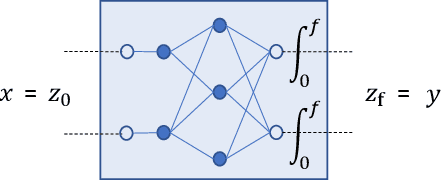
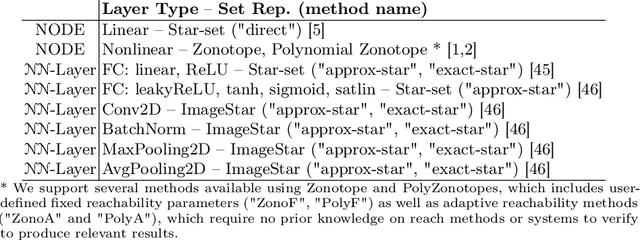

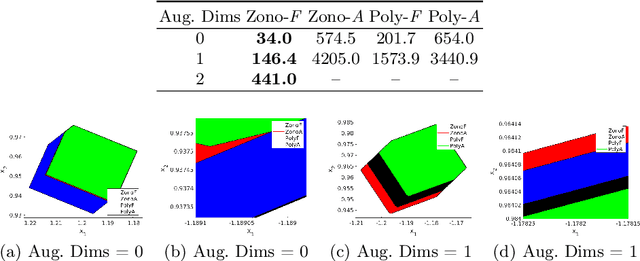
Abstract:Continuous deep learning models, referred to as Neural Ordinary Differential Equations (Neural ODEs), have received considerable attention over the last several years. Despite their burgeoning impact, there is a lack of formal analysis techniques for these systems. In this paper, we consider a general class of neural ODEs with varying architectures and layers, and introduce a novel reachability framework that allows for the formal analysis of their behavior. The methods developed for the reachability analysis of neural ODEs are implemented in a new tool called NNVODE. Specifically, our work extends an existing neural network verification tool to support neural ODEs. We demonstrate the capabilities and efficacy of our methods through the analysis of a set of benchmarks that include neural ODEs used for classification, and in control and dynamical systems, including an evaluation of the efficacy and capabilities of our approach with respect to existing software tools within the continuous-time systems reachability literature, when it is possible to do so.
Ablation Study of How Run Time Assurance Impacts the Training and Performance of Reinforcement Learning Agents
Jul 08, 2022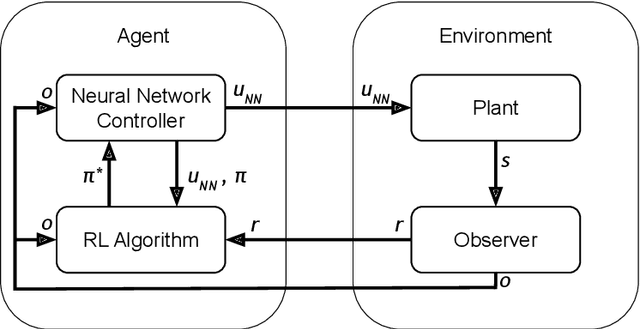
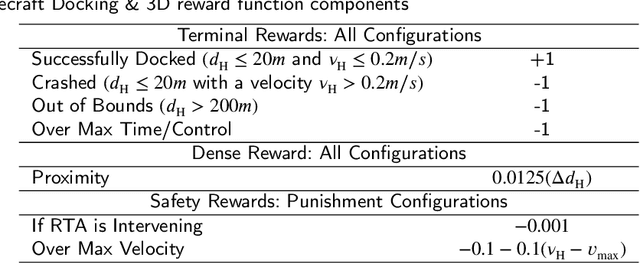
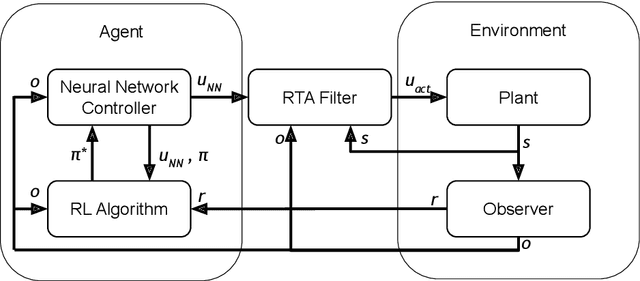
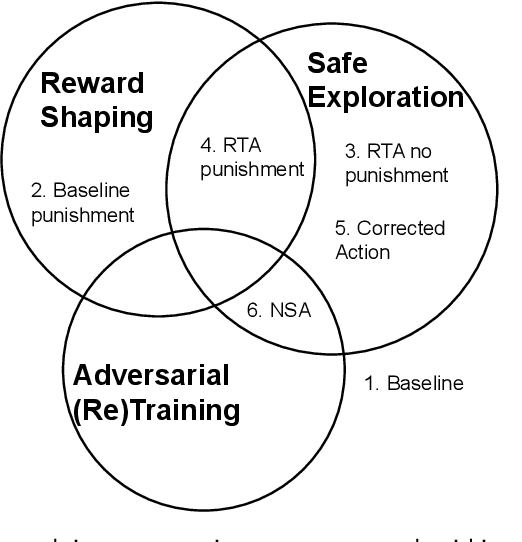
Abstract:Reinforcement Learning (RL) has become an increasingly important research area as the success of machine learning algorithms and methods grows. To combat the safety concerns surrounding the freedom given to RL agents while training, there has been an increase in work concerning Safe Reinforcement Learning (SRL). However, these new and safe methods have been held to less scrutiny than their unsafe counterparts. For instance, comparisons among safe methods often lack fair evaluation across similar initial condition bounds and hyperparameter settings, use poor evaluation metrics, and cherry-pick the best training runs rather than averaging over multiple random seeds. In this work, we conduct an ablation study using evaluation best practices to investigate the impact of run time assurance (RTA), which monitors the system state and intervenes to assure safety, on effective learning. By studying multiple RTA approaches in both on-policy and off-policy RL algorithms, we seek to understand which RTA methods are most effective, whether the agents become dependent on the RTA, and the importance of reward shaping versus safe exploration in RL agent training. Our conclusions shed light on the most promising directions of SRL, and our evaluation methodology lays the groundwork for creating better comparisons in future SRL work.
An Empirical Analysis of the Use of Real-Time Reachability for the Safety Assurance of Autonomous Vehicles
May 03, 2022
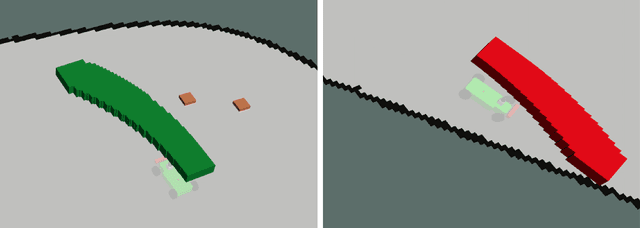
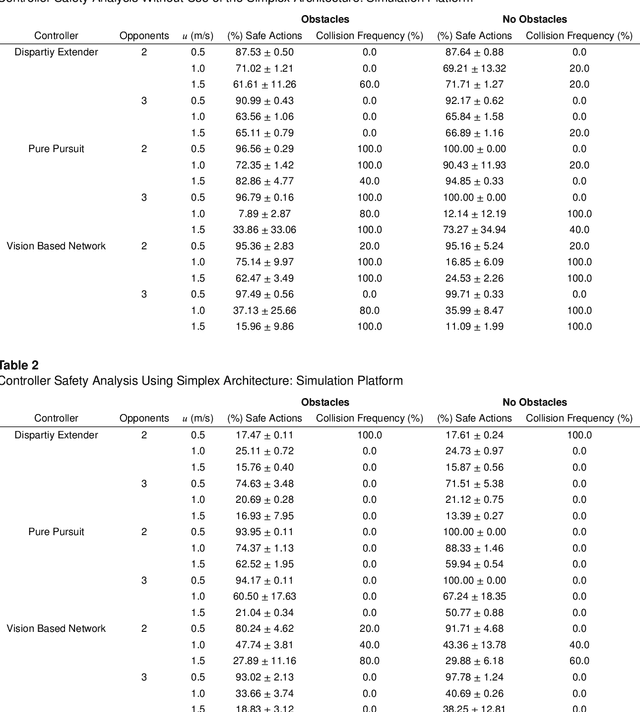
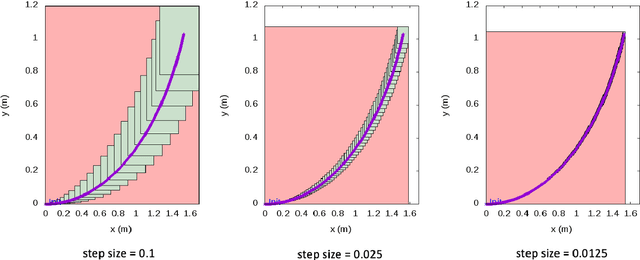
Abstract:Recent advances in machine learning technologies and sensing have paved the way for the belief that safe, accessible, and convenient autonomous vehicles may be realized in the near future. Despite tremendous advances within this context, fundamental challenges around safety and reliability are limiting their arrival and comprehensive adoption. Autonomous vehicles are often tasked with operating in dynamic and uncertain environments. As a result, they often make use of highly complex components, such as machine learning approaches, to handle the nuances of sensing, actuation, and control. While these methods are highly effective, they are notoriously difficult to assure. Moreover, within uncertain and dynamic environments, design time assurance analyses may not be sufficient to guarantee safety. Thus, it is critical to monitor the correctness of these systems at runtime. One approach for providing runtime assurance of systems with components that may not be amenable to formal analysis is the simplex architecture, where an unverified component is wrapped with a safety controller and a switching logic designed to prevent dangerous behavior. In this paper, we propose using a real-time reachability algorithm for the implementation of the simplex architecture to assure the safety of a 1/10 scale open source autonomous vehicle platform known as F1/10. The reachability algorithm that we leverage (a) provides provable guarantees of safety, and (b) is used to detect potentially unsafe scenarios. In our approach, the need to analyze an underlying controller is abstracted away, instead focusing on the effects of the controller's decisions on the system's future states. We demonstrate the efficacy of our architecture through a vast set of experiments conducted both in simulation and on an embedded hardware platform.
Verification for Machine Learning, Autonomy, and Neural Networks Survey
Oct 03, 2018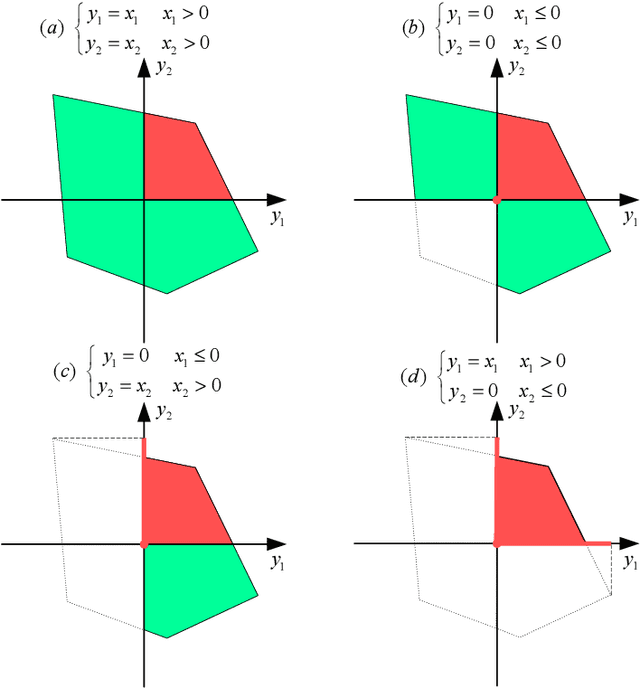
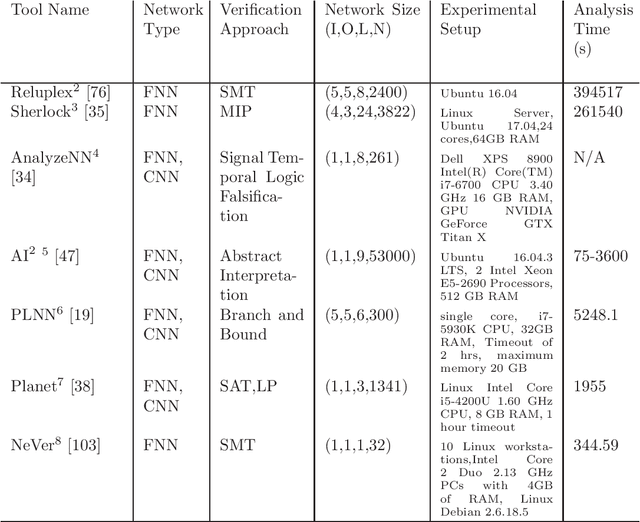


Abstract:This survey presents an overview of verification techniques for autonomous systems, with a focus on safety-critical autonomous cyber-physical systems (CPS) and subcomponents thereof. Autonomy in CPS is enabling by recent advances in artificial intelligence (AI) and machine learning (ML) through approaches such as deep neural networks (DNNs), embedded in so-called learning enabled components (LECs) that accomplish tasks from classification to control. Recently, the formal methods and formal verification community has developed methods to characterize behaviors in these LECs with eventual goals of formally verifying specifications for LECs, and this article presents a survey of many of these recent approaches.
 Add to Chrome
Add to Chrome Add to Firefox
Add to Firefox Add to Edge
Add to Edge